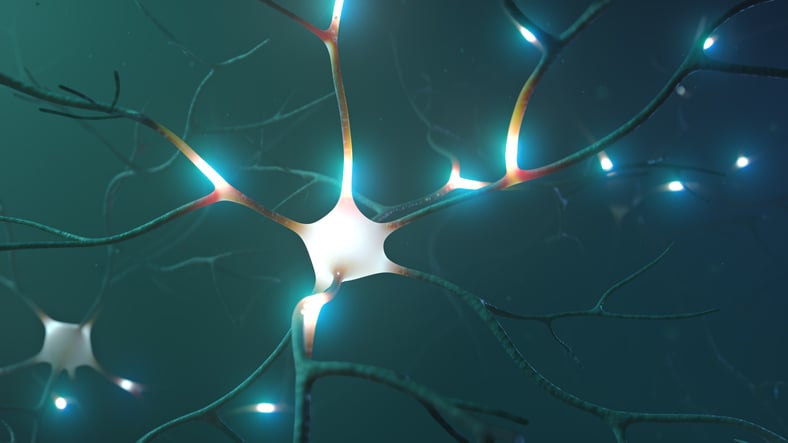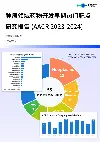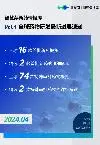Public-private collaboration aims to take ALS therapies beyond 'a shot in the dark'
2024-05-29
临床3期高管变更

Preview
来源: FierceBiotech
The new program's forthcoming database will fill in the knowledge gaps by first compiling existing data from various entities.
In 2015, after spending nearly four decades grinding his way up the ladder at one of the world’s most prolific construction equipment companies, Ed Rapp was nearing its apex. He had risen from humble beginnings in a town of fewer than 800 people to presiding over Caterpillar Inc.’s massive Resource Industries division. He was in the running to become CEO.
Ed Rapp" data-entity-type="media" data-entity-uuid="1585059a-1314-431a-b373-d0ebef16d319" data-view-mode="half_body_width"/>
Then the rug was pulled out from under him. Rapp was diagnosed with the incurable neurodegenerative disease amyotrophic lateral sclerosis—also known as ALS, or Lou Gehrig’s disease—and forced into early retirement.
“Thirty-seven years at Cat, you know, two sick days and 12 months from potentially being the CEO of the company, when you get an ALS diagnosis, and you’ve got two to five years to live,” he recalled to Fierce Biotech Research in an interview.
Rapp, 67, has clearly outlived that prognosis and has taken advantage of the extra time by channeling his ambition into the quest to find better therapies and diagnostic tools for ALS. Now, he’s co-chair of a working group in a new effort to change how the disease is diagnosed and treated: the Accelerating Medicines Partnership in Amyotrophic Lateral Sclerosis, or AMP ALS, a five-year, $60 million public-private partnership announced May 21 by Foundation for the National Institutes of Health (FNIH), an independent nonprofit that supports the work of the NIH.
“This is the first time we’re going to have all the leading organizations working in ALS from the for-profit side and the non-profit side working together,” Alessio Travaglia, Ph.D. director of neuroscience at the FNIH, said. “That’s the main reason why this initiative is going to be so powerful.”
Slow progress
Dave Shulman" data-entity-type="media" data-entity-uuid="9aa2091a-a7aa-4612-b136-abc2b3d45f76" data-view-mode="half_body_width"/>
“[When I was first diagnosed,] I wondered, 'Why are we 10 years out from the Ice Bucket Challenge, over 80 years out from Lou Gehrig’s famous speech, and more than 150 years out from when ALS was first identified by a researcher, and we’re still not at a place where we can meaningfully slow, stop or reverse the disease?'” he said. “And what are the underlying reasons why so many ALS clinical trials fail?”
Recent years have seen some big steps forward, like the 2023 FDA approval of Biogen and Ionis Pharmaceuticals’ Qalsody, or tofersen, which slows symptom progression in ALS patients with a mutation in the protein SOD-1. But that subgroup makes up just 2% of the disease population. The two drugs that are FDA-approved for all ALS patients, Covis Pharma’s Rilutek and Mitsubishi Tanabe’s Radicava, have only “modest” effects, according to James Berry, M.D., a neurologist and ALS researcher at Massachusetts General Hospital.
“We are lucky to be in an era when we have seen the development of newer more effective therapies for ALS than ever before,” Berry said in an email. But the tempered efficacy of ALS drugs that work across subtypes suggests that they might be acting on mechanisms that occur after damage-causing cascades are already underway, he explained, which limits how much of an impact they can have, even if they do apply to all patients.
“So, while we do have more treatment options today than we have ever had in the past, we still have a long way to go,” Berry said.
ALS is a complicated disease, to put it mildly. And while decades of research have lent insight into the basic mechanisms and the contribution of factors like SOD-1 mutations, there’s still a black box around its natural course and what kinds of biomarkers are associated with progression, Steph Fradette, vice president and head of neuromuscular development at Biogen and a steering committee member of AMP ALS, told FBR.
Steph Fradette, vice president and head of neuromuscular development at Biogen" data-entity-type="media" data-entity-uuid="45d36267-20c8-474d-a0b9-5791e8da19f4" data-view-mode="half_body_width"/>
“The foundational challenge is that we’re still coming to understand the underlying pathophysiology of ALS,” she said. “There are exceptions to that rule and we are making a lot of progress as a field, but we still have a lot of uncertainty about what is actually causing the disease, what are the downstream implications of that cause and then, of course, how to address it.”
The win with Qalsody aside, Biogen like other companies has weathered its share of ALS drug failures, most recently with an Ionis-partnered candidate called BIIB105. That drug wasn’t as far along as the company’s first attempt at an ALS therapy—dexpramipexole—which failed a phase 3 trial in 2013, but it suffered from the same blind spots with regards to efficacy.
“Over the past several years we’ve found ourselves, like with dexpramipexole, in a situation where we have false positive and false negative trial results,” Fradette said. That has led to conversations within the field about what endpoints are really indicative of progress as well as about the tools used to measure them, she added. That’s not to say there’s been no improvements, of course: Qalsody was approved on the basis of reductions in a marker called plasma neurofilament light chain (NfL), a protein that is increasingly being used as an indicator of neuronal damage in neurological drug trials.
But it took longer to get NfL assays out of academic labs and into industry practice than if an initiative like AMP ALS had existed, Fradette said. And it’s hard to go further without knowing how the disease progresses naturally—which is impossible without biological samples from patients, both living and deceased. Although there are currently disparate efforts to collect these on the part of government and nonprofit organizations, there are still too few, Travaglia said.
“We don’t have enough post-mortem samples or longitudinal samples. We have to rely on just one single data point, meaning we take patients today and analyze those samples, but we don’t know how those biomarkers are going to progress,” he explained.
Beyond a shot in the dark
The ALS AMP’s database will fill in the knowledge gaps by first compiling existing data from various entities then getting more from patients and those at risk of ALS based on what’s missing. Seven biotechs, seven nonprofits and two government agencies—the FDA and the NIH's National Institute of Neurological Disorders and Stroke—are involved in the creation of the database. Representatives from the entities will sit on a steering committee that decides what information is needed, then the FNIH and NIH will put out requests for proposals and issue grants to researchers to collect it. “More than anything, I think that bringing together these different datasets and knowledge across the different people at the table will help accelerate that understanding in a way that anyone or group of us can do on our own,” Fradette said.
Besides identifying biomarkers and therapies that might be useful for ALS patients in general, the effort may also delineate groups of patients with certain genetic factors that cause them to develop ALS, like those with the SOD-1 mutation. This could eventually make it possible to treat ALS with personalized medicines like the ones used for cancer, Julie Gerberding, M.D., president and CEO of the FNIH, said in an email.
“The program will focus on comprehensive data collection and analysis that can help identify subgroups within the ALS population,” Gerberding said. “These subgroups might have distinct underlying causes that will allow researchers to develop targeted therapies specific to the subgroups.”
For Rapp, Shulman and many other patients who are involved in AMP ALS, progress can’t come soon enough.
Editor's note: This article was updated May 29 to clarify that the FNIH is an independent nonprofit and to update the number of biotechs, partners and nonprofits participating in AMP ALS, as well as to adjust some details about how the program works. Travaglia's last name was also misspelled in an earlier version and was corrected.
更多内容,请访问原始网站
文中所述内容并不反映新药情报库及其所属公司任何意见及观点,如有版权侵扰或错误之处,请及时联系我们,我们会在24小时内配合处理。
靶点
热门报告
立即开始免费试用!
智慧芽新药情报库是智慧芽专为生命科学人士构建的基于AI的创新药情报平台,助您全方位提升您的研发与决策效率。
立即开始数据试用!
智慧芽新药库数据也通过智慧芽数据服务平台,以API或者数据包形式对外开放,助您更加充分利用智慧芽新药情报信息。





